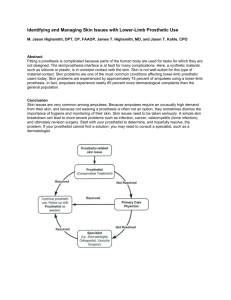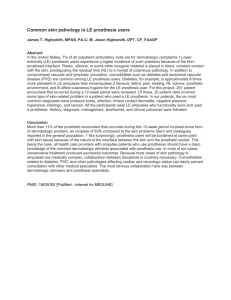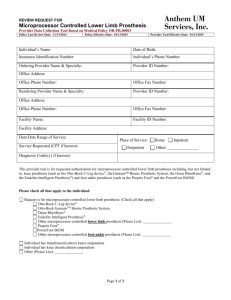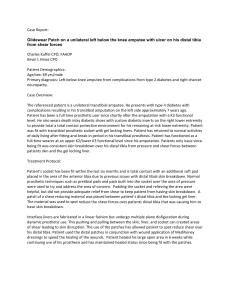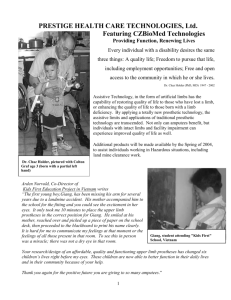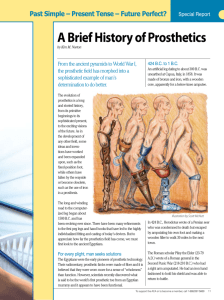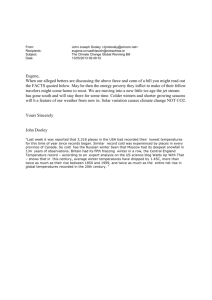Residual-limb skin temperature in transtibial sockets Jeffrey T. Peery
advertisement
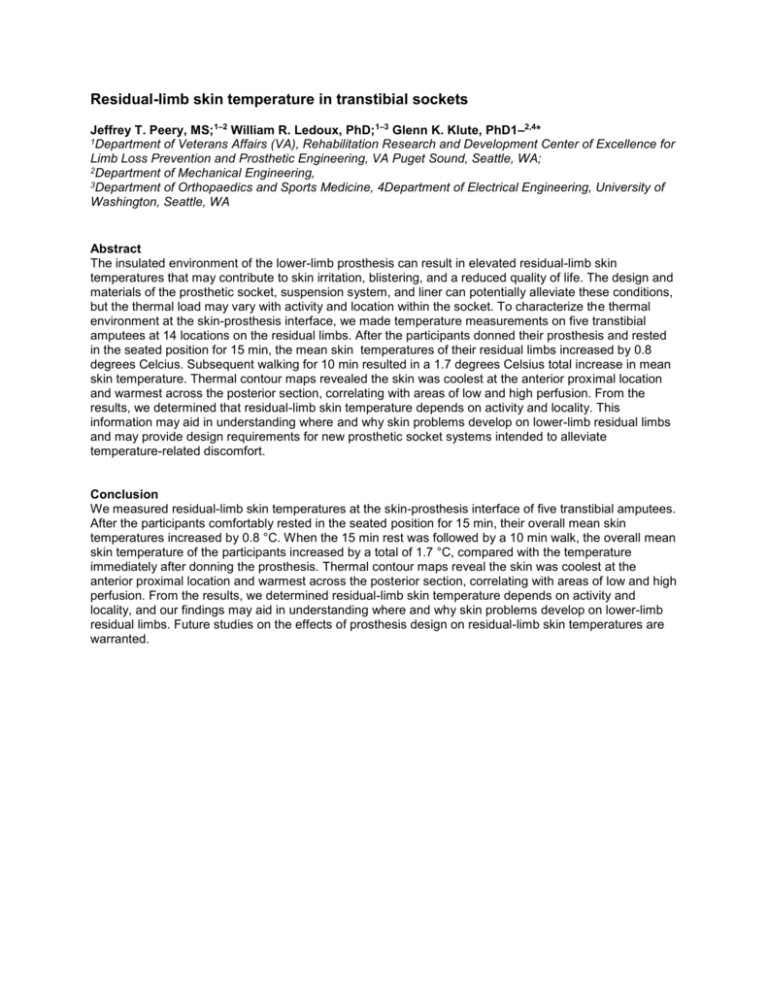
Residual-limb skin temperature in transtibial sockets Jeffrey T. Peery, MS;1–2 William R. Ledoux, PhD;1–3 Glenn K. Klute, PhD1–2,4* 1Department of Veterans Affairs (VA), Rehabilitation Research and Development Center of Excellence for Limb Loss Prevention and Prosthetic Engineering, VA Puget Sound, Seattle, WA; 2Department of Mechanical Engineering, 3Department of Orthopaedics and Sports Medicine, 4Department of Electrical Engineering, University of Washington, Seattle, WA Abstract The insulated environment of the lower-limb prosthesis can result in elevated residual-limb skin temperatures that may contribute to skin irritation, blistering, and a reduced quality of life. The design and materials of the prosthetic socket, suspension system, and liner can potentially alleviate these conditions, but the thermal load may vary with activity and location within the socket. To characterize the thermal environment at the skin-prosthesis interface, we made temperature measurements on five transtibial amputees at 14 locations on the residual limbs. After the participants donned their prosthesis and rested in the seated position for 15 min, the mean skin temperatures of their residual limbs increased by 0.8 degrees Celcius. Subsequent walking for 10 min resulted in a 1.7 degrees Celsius total increase in mean skin temperature. Thermal contour maps revealed the skin was coolest at the anterior proximal location and warmest across the posterior section, correlating with areas of low and high perfusion. From the results, we determined that residual-limb skin temperature depends on activity and locality. This information may aid in understanding where and why skin problems develop on lower-limb residual limbs and may provide design requirements for new prosthetic socket systems intended to alleviate temperature-related discomfort. Conclusion We measured residual-limb skin temperatures at the skin-prosthesis interface of five transtibial amputees. After the participants comfortably rested in the seated position for 15 min, their overall mean skin temperatures increased by 0.8 °C. When the 15 min rest was followed by a 10 min walk, the overall mean skin temperature of the participants increased by a total of 1.7 °C, compared with the temperature immediately after donning the prosthesis. Thermal contour maps reveal the skin was coolest at the anterior proximal location and warmest across the posterior section, correlating with areas of low and high perfusion. From the results, we determined residual-limb skin temperature depends on activity and locality, and our findings may aid in understanding where and why skin problems develop on lower-limb residual limbs. Future studies on the effects of prosthesis design on residual-limb skin temperatures are warranted. Figure 2. Residual-limb skin temperature (Subject 5) versus time for proximal anterior and proximal lateral sensors over duration of test. SS = steady state. PMID: 15944879 [PubMed - indexed for MEDLINE]
